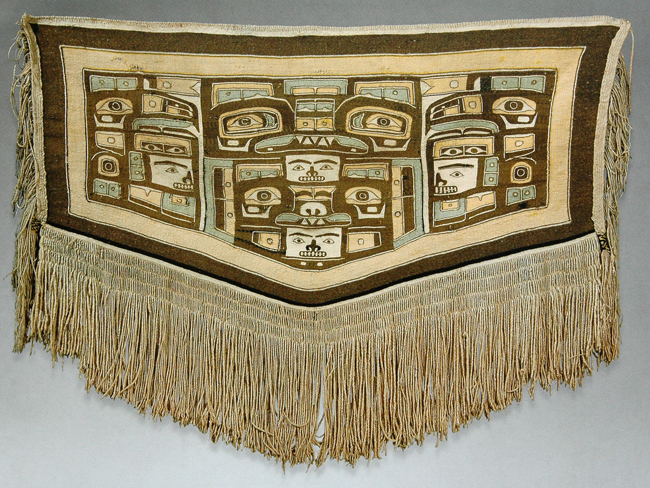Ceremonial and cultural items still in Europe

By Kathleen Imbert
Symbolic, ceremonial and cultural Native objects and artworks pop up in Europe from time to time. Three centuries of European and American contact feed a sometimes insatiable appetite of digging deep into the aesthetic traditions of tribes across the continent and many objects roam the earth at the whim of visitors far from their native lands.
Scholars, diplomats, missionaries, and traders continued “ethnic” interest in First Nations cultural heritage objects set them on world tours for decades. They sometimes end up back home much to the joy of communities.
Many stories mixed up with the dreams of stuffed attics with hidden treasures that missionaries gathered while Christianizing the New World are heard. One antique dealer from the south of France said “In the attic of the Oblates church there is a mound of Northwest Coast art and artifacts”.
The Missionary Oblates of Mary Immaculate is a Catholic missionary congregation that was founded in 1816 in the south of France. The Oblates opened and operated the mission school in 1863 which became Mission B.C. St. Mary’s followed the mission and operated until 1984.
The mission church in France – founded by St. Eugene de Mazenod in 1816 – still operates as a missionary congregation today. Whether their attic is filled or not with Sto:lo or other artifacts has yet to be revealed.
Recently the members of the Namgis First Nation in northern B.C. spotted a well-documented woven Chilkat blanket done by one of their high ranking noblewomen, Anislaga, at the Paris branch of Christie’s Auction House in France.
“It is a great story in acquiring the blanket, and we are so happy to have it returned to our territories,” says Trevor Isaac from the U’mista Cultural Society in B.C.
The blanket came home thanks to the determination of the people in the northern B.C. community who mustered interest and the hefty sum to purchase it from the prestigious auction house. Photographed by Edward Curtis in the early 20th century this blanket came up for auction undetected in New York 10 years prior to its trip to Paris.
Retrieving cultural pieces often spark interest in communities.
“Along with other family members, I have done research in tracking all of the blankets that still exist around the world,” says Isaac.
Keeping track of collections and retrieving rare pieces can be a full-time job that requires a big wallet in today’s so-called art world.
Kathleen Imbert, Curator and Art Gallery Manager and citizen of Wikwemikong Unceded Indian Reserve, residing in France.


